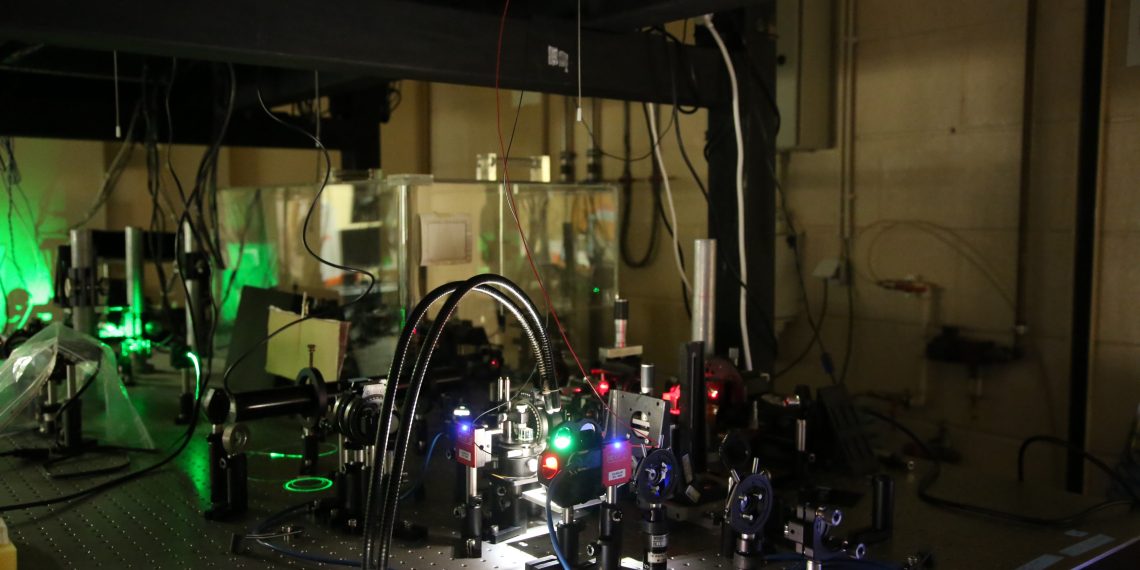A team of researchers at INESC TEC is developing a prototype of a quantum camera capable of seeing the invisible. But what does this mean in practice? This prototype will be able to capture information in the infrared (IR) without the need for infrared cameras – which, besides being expensive (costing hundreds of thousands of euros), also have technical limitations, e.g., low resolution and speed, or high noise.
This new solution could play a key role in areas like healthcare (by enabling the detection of biomarkers), environment (e.g., identifying microplastics, analysing gas plumes, or mineral prospecting) or even defence (by allowing the detection of explosives).
The technique that makes this possible is called Imaging with Undetected Photons (IUP), which works on the principle that an infrared photon interacts with the sample, but the image is reconstructed from its “twin” photon, which is in the visible spectrum and has not interacted with the sample.
“Nowadays, to ‘see’ what our eyes cannot, we use cameras that capture infrared (IR) radiation. The problem is that we are talking about extremely expensive equipment, with lower resolution than visible cameras and which require cooling systems to reduce ‘image noise’. The prototype we are going to develop will allow infrared imaging using ordinary visible cameras – which, besides being much cheaper, offer greater stability,” explained Tiago Ferreira, INESC TEC researcher in charge of the HyperQulm project.
The major innovation proposed by this project lies in the use of quantum physics and adaptive optics to create a compact, more robust system with higher-quality images.
“From a scientific point of view, our goal is to take the technique of imaging with undetected photons beyond the laboratory, because we are going to combine it with wavefront shaping and active spectral scanning,” the researcher explained.
Let’s break this down to better understand these scientific advances.
First, wavefront shaping. When light passes through difficult media – like biological tissue, turbulent environments, or light-scattering materials – the light’s wavefront becomes “disorganised”, as if it were a warped mirror. “Wavefront shaping uses adaptive optics and algorithms to correct these distortions in real time, allowing for sharper images even under adverse conditions,” explained Tiago Ferreira.
And where does active spectral scanning come in? “It means changing the photon’s wavelength in a controlled way, as if you were ‘turning a dial’ to explore different colours of the infrared. This makes it possible to build a hyperspectral image: not only a photograph, but also chemical information, because each material absorbs light differently in each part of the spectrum,” said the INESC TEC researcher.
Thus, this imaging technique with undetected photons ceases to be just a laboratory marvel and becomes a robust, portable tool with real-world applications in fields like those already mentioned (healthcare, environment, defence, or even industry).
The prototype is expected to be ready by March 2027. HyperQulm is one of several projects approved in 2025 by the Foundation for Science and Technology (FCT) under the Exploratory Projects Call.
The researcher mentioned in this news piece is associated with INESC TEC



 News, current topics, curiosities and so much more about INESC TEC and its community!
News, current topics, curiosities and so much more about INESC TEC and its community!